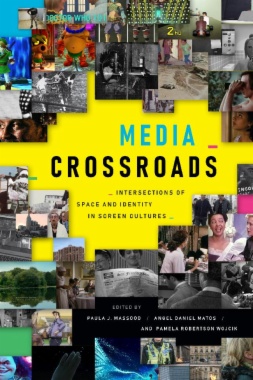The contributors to Media Crossroads examine space and place in media as they intersect with sexuality, race, ethnicity, age, class, and ability. Considering a wide range of film, television, video games, and other media, the authors show how spaces—from the large and fantastical to the intimate and virtual—are shaped by the social interactions and intersections staged within them. The highly teachable essays include analyses of media representations of urban life and gentrification, the ways video games allow users to adopt an experiential understanding of space, the intersection of the regulation of bodies and spaces, and how style and aesthetics can influence intersectional thinking. Whether interrogating the construction of Portland as a white utopia in Portlandia or the link between queerness and the spatial design and gaming mechanics in the Legend of Zelda video game series, the contributors deepen understanding of screen cultures in ways that redefine conversations around space studies in film and media.
Contributors. Amy Corbin, Desirée J. Garcia, Joshua Glick, Noelle Griffis, Malini Guha, Ina Rae Hark, Peter C. Kunze, Paula J. Massood, Angel Daniel Matos, Nicole Erin Morse, Elizabeth Patton, Matthew Thomas Payne, Merrill Schleier, Jacqueline Sheean, Sarah Louise Smyth, Erica Stein, Kirsten Moana Thompson, John Vanderhoef, Pamela Robertson Wojcik
- Cover
- Contents
- Acknowledgments
- Introduction: Intersections and/in Space \ Paula J. Massood, Angel Daniel Matos, and Pamela Robertson Wojcik
- I_ Digital Intersections
- Chapter One / “Where Do Aliens Pee?”: Bathroom Selfies, Trans Activism, and Reimagining Spaces \ Nicole Erin Morse
- Chapter Two / The Queerness of Space and the Body in Nintendo’s: The Legend of Zelda Series \ Angel Daniel Matos
- Chapter Three / The Digital Flâneuse: Exploring Intersectional Identities and Spaces through Walking Simulators \ Matthew Thomas Payne and John Vanderhoef
- II_Cinematic Urban Intersections
- Chapter Four / Blurring Boundaries, Exploring Intersections: Form, Genre, and Space in Shirley Clarke’s The Connection \ Paula J. Massood
- Chapter five / Intersections in Madrid’s Periphery: Cinematic Cruising in Eloy de la Iglesia’s La semana del asesino (1972) \ Jacqueline Sheean
- Chapter Six / Encounters and Embeddedness: The Urban Cinema of Ramin Bahrani \ Amy Corbin
- Chapter Seven / Perpetual Motion: Mobility, Precarity, and Slow Death Cinema \ Pamela Robertson Wojcik
- III_Urbanism and Gentrification
- Chapter Eight / Senior Citizens under Siege: Number Our Days (1976) and Gray Power Activism in Venice\ Joshua Glick
- Chapter Nine / Music City Makeover: The Televisual Tourism of Nashville \ Noelle Griffis
- Chapter Ten / Portland at the Intersection: Gentrification and the Whitening of the City in Portlandia’s Hipster Wonderland \ Elizabeth A. Patton
- Chapter Eleven / Criminal Properties: Real Estate and the Upwardly Mobile Gangster \ Erica Stein
- IV_Race, Place, and Space
- Chapter Twelve / Dressing the Part: Black Maids, White Stars in the Dressing Room \ Desirée J. Garcia
- Chapter Thirteen / “I Do Not Know That I Find Myself Anywhere”: The British Heritage Film and Spaces of Intersectionality in Amma Asante’s Belle (2013) \ Sarah Louise Smyth
- Chapter Fourteen / Queerness, Race, and Class in the Midcentury Suburb Film Crime of Passion (1956) \ Merrill Schleier
- Chapter Fifteen / Fair Play: Race, Space, and Recreation in Black Media Culture \ Peter C. Kunze
- V_Style and/As Intersectionality
- Chapter Sixteen / The Toxic Intertwining of Small-Town Lives in Happy Valley \ Ina Rae Hark
- Chapter Seventeen / Tattooed Light and Embodied Design: Intersectional Surfaces in Moana \ Kirsten Moana Thompson
- Chapter Eighteen/ Vaguely Visible: Intersectional Politics in Bertrand Bonello’s Nocturama (2016) \ Malini Guha
- Notes
- Bibliography
- Contributors
- Index
- A
- B
- C
- D
- E
- F
- G
- H
- I
- J
- K
- L
- M
- N
- O
- P
- Q
- R
- S
- T
- U
- V
- W
- Y
- Z

